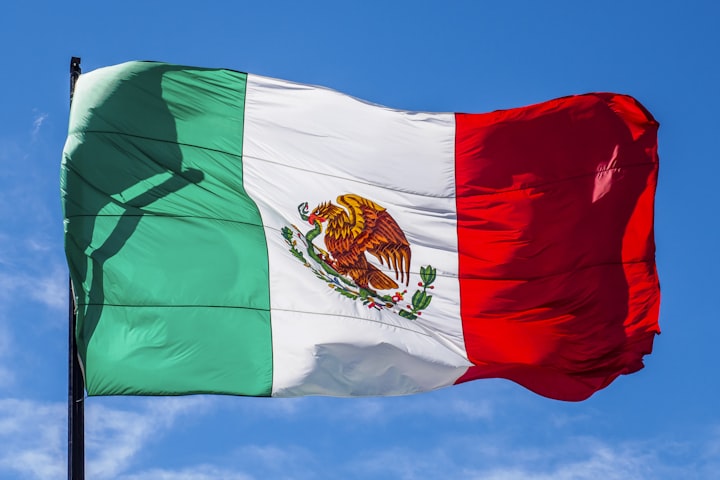A Brief History of the Mexican Flag
The current flag of Mexico has three stripes. It is green, yellow, and red with an emblem. The overall general design of the Mexican flag has been the same since 1821, but this flag was adopted in 1968.

The current flag of Mexico has three stripes. It is green, yellow, and red with an emblem. The overall general design of the Mexican flag has been the same since 1821, but this flag was adopted in 1968.
The design in the center of the flag is the image of an eagle holding a snake. The eagle is sitting on a rock near a cactus in a lake. The Aztecs had a legend that their gods had told them to build a city where they saw an eagle with a snake.
The villages near the lake are called palaces due to the surrounding lush vegetation. Both the palaces and the eagle are decorated with jewels and precious stones.
The design of the palaces includes a lotus blossom. The design of the eagle, while it was originally red, was changed to green by the government for salsa celebration.
The green and yellow colors of the flag have been adopted into the Mexican flag, and can be seen from other parts of the country.
The Second World War is often held up as the exact reason why the flag was adopted, but the fact is that the flag was already in use by the Aztecs, and only used for ceremonial purposes.
The colors are those of the color Maple, the official color of the Mexican flag, whereas the red, yellow, and green colors are those of the color Burgundy, the official color of the Spanish flag.
The center of the flag depicts a Mapuche, a sacred animal also known as the Indian. The symbolism behind the colors and where they are painted can be linked to numerous legends.
It has also been painted that the Aztecs honored these relics, these gods. The same legends tell of three rivers, the Mississippi, the Colorado, and the Rio Grande, and that they were natural allies as they crossed land bridges.
The colors are not restricted to the flag itself. The colors of the clothing and furnishings in which a person is dressed also have a strong significance-white for mourning, blue for success and victory, and green for farewelling.
Another theory outlines the theory that these specific colors were assigned by the government and recognized as clothing colors, whereas in fact the colors are natural colors and known as primary colors, those that show up in every natural material.
There are many stories about these colors and their uses. According to one story, the pink and white rocks created the prints on the cave walls when the waters filled the cave.
Another story tells of a woman who had painted pink along the tops of the rocks, only to see them trampled by wild horses. This example shows that the colors have very strong meaning, regardless of what they are used for.
The colors and their meaning are not the only things that are unique to Mexican architecture.
The facades and door faces as well as the construction patterns and sizes of buildings are also quite distinctive.
The country is also renowned for doing things differently from most of its neighbors. It is possible to see a Oo codex here and you will see a real vernal pool.
At home, you will find wooden urns instead of ponds. An Indian would place a pipe in the mouth of such an urn.
Most significantly, shopping in Mexico is much less complicated than in the United States. Of course, there are still many unique items that are sold there that have no counterpart in the United States, making the purchase of many Mexican handicrafts and artifacts a fairly simple endeavor.
In short, Mexico is an excellent place to visit if you wish to combine fun and relaxation with an interesting place to purchase interesting merchandise and artifacts.
About the Creator
SHYAM PHAD
I am Shyam Phad. I am the founder of The Financial Diary , and I love to write about business and finance.






Comments
There are no comments for this story
Be the first to respond and start the conversation.